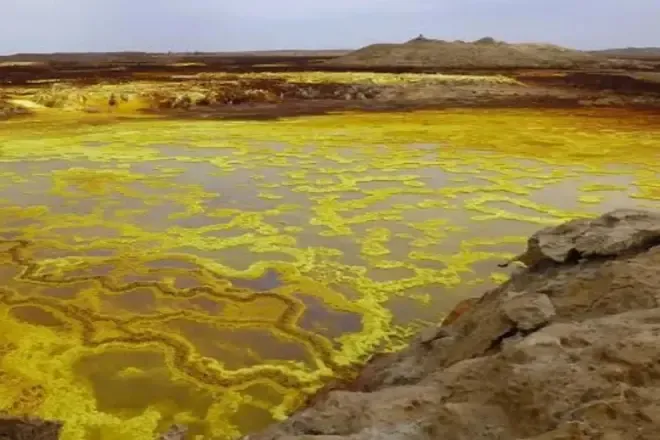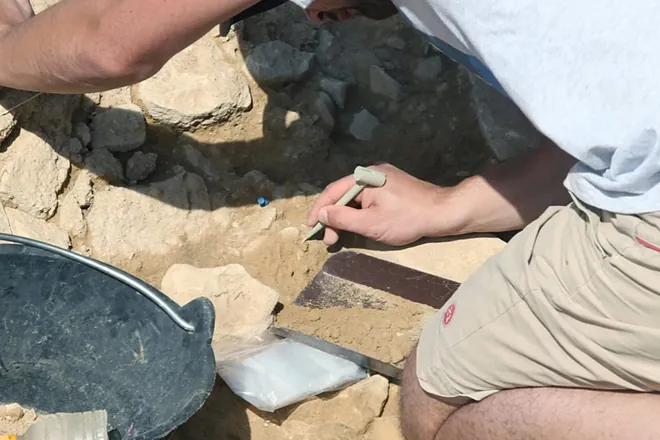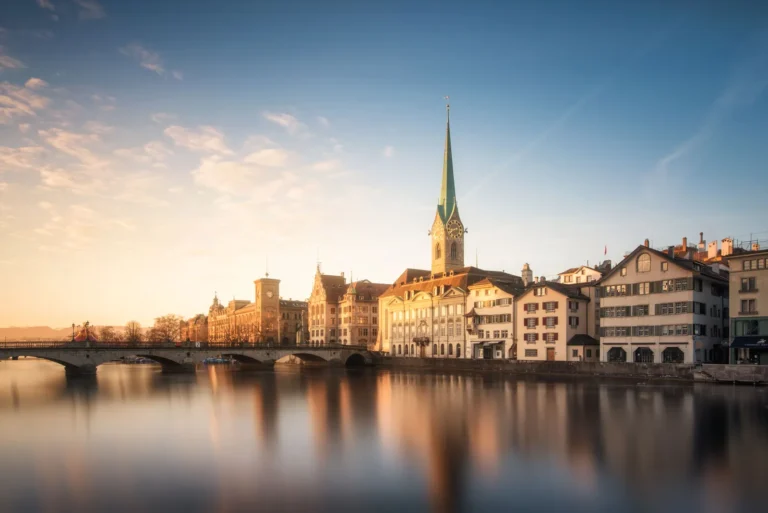The idea of a new ocean forming in Ethiopia sounds like something out of a science fiction movie, but it’s a real geological process unfolding in the Afar Triangle. This region, where three tectonic plates meet, is slowly pulling apart, setting the stage for a dramatic transformation that could create a new ocean in millions of years. In this blog post, we’ll explore the fascinating signs of this process, why it’s happening, and what it means for the future.

What Is Happening in Ethiopia’s Afar Region?
The Afar Triangle, located in northeastern Ethiopia, is a unique place where the Earth’s crust is thinning and splitting. This area is part of the East African Rift, a massive crack in the continent where Africa is slowly breaking apart. Over time, this rifting could allow seawater from the nearby Red Sea and Gulf of Aden to flood in, forming a new ocean. Scientists call this process continental rifting, and it’s like watching the birth of an ocean in slow motion.
The Afar region is special because it’s where three tectonic plates—the Nubian, Somali, and Arabian—are moving away from each other. This movement is creating space for new crust to form, much like what happens at the bottom of existing oceans. The signs we’re seeing today, from giant cracks to volcanic eruptions, are clues that this region is on its way to becoming an oceanic basin.
Key Signs of a New Ocean Forming
Let’s break down the major signs that point to the formation of a new ocean in Ethiopia. These natural phenomena are like pieces of a puzzle, showing us how the Earth is reshaping itself.
1. A Massive Rift Appeared in 2005
In 2005, something incredible happened in the Ethiopian desert: a 35-mile-long (56-kilometer) rift opened up in just a few days. This wasn’t a small crack—it was a huge split in the Earth’s surface, equivalent to hundreds of years of normal tectonic movement. This event, studied by scientists and published in journals like Geophysical Research Letters, showed that the Nubian and Somali plates are pulling apart at a rate of about 0.5 to 1.5 centimeters per year.
This rapid rifting is a clear sign that the Afar region is stretching and thinning. As the plates continue to move, the rift will widen, creating space that could one day be filled with seawater.
2. Volcanic Activity and Molten Rock
The Afar Triangle is one of the most volcanically active places on Earth. At its heart is Erta Ale, a volcano with glowing lava lakes that have been active for decades. This volcanic activity isn’t just a spectacle—it’s a sign that molten rock from deep within the Earth is rising to the surface, much like what happens at mid-ocean ridges where new oceanic crust is born.
Scientists have found that the magma in Afar has chemical signatures similar to those found in ocean floors. This suggests that the region is transitioning from a continental landscape to an oceanic one. The 2005 rift event was driven by these molten rock intrusions, which are pushing the plates apart and shaping the future ocean.
3. Tectonic Plates Pulling Apart
The Afar Triangle is a triple junction, a rare spot where three tectonic plates meet. The Nubian plate (covering most of Africa), the Somali plate (eastern Africa), and the Arabian plate (Arabian Peninsula) are all moving in different directions. The Arabian plate is drifting north at about 2.5 centimeters per year, while the Somali plate is pulling eastward from the Nubian plate.
This divergence is thinning the Earth’s crust in the Afar region, creating faults and fissures. Over millions of years, this thinning could allow seawater to flow in from the Red Sea and Gulf of Aden, flooding the low-lying areas and forming a new ocean.
4. Seismic Evidence of Oceanic Processes
Research published in Nature Geoscience and other journals shows that the Afar region’s geological activity mirrors what happens at mid-ocean ridges, where new ocean floors are created. Seismic data from the 2005 rift event revealed that the crack formed quickly because of molten rock pushing up from the mantle. Scientists also detected a pulsing mantle plume—a column of hot rock rising from deep within the Earth—that’s driving this process.
This plume has distinct chemical signatures, suggesting it’s been active for millions of years and will continue to shape the region. These findings confirm that Afar is behaving like an embryonic ocean, with processes that could eventually lead to a new body of water.
5. A Long History of Rifting
The East African Rift, which includes the Afar Triangle, has been active for about 30 million years. It’s responsible for iconic landscapes like the Great Rift Valley, which stretches from Ethiopia to Mozambique, and even the Red Sea, which formed as the Arabian Peninsula split from Africa. The 2005 rift event is just one chapter in this long story of continental breakup.
In 2018, a large crack appeared in Kenya’s Rift Valley, sparking excitement about a new ocean. While that crack was later linked to other causes, the Afar region’s rifting is directly tied to tectonic divergence. Satellite measurements, like those from GPS and radar, show the plates are still moving, slowly but steadily widening the rift.
6. Future Flooding of the Afar Region
Looking millions of years into the future, geologists predict that the Afar region and parts of the East African Rift could become submerged. As the rift widens and the crust thins, seawater from the Red Sea and Gulf of Aden could flood the low-lying areas, creating a new ocean. This process might isolate parts of Ethiopia, Somalia, Kenya, and Tanzania as a new continent or a large island in the Indian Ocean.
While this won’t happen in our lifetime—scientists estimate 5 to 10 million years—it’s a reminder of how dynamic our planet is. Rising sea levels due to climate change could even speed up this flooding in the distant future.
Why This Matters: Opportunities and Challenges
The formation of a new ocean in Ethiopia is more than just a geological curiosity—it could have big implications for the region and the world. Here are a few ways this process might impact the future:
- Economic Opportunities: A new ocean could create coastlines and ports for landlocked countries like Ethiopia and Uganda. This could boost trade, fishing, and tourism, opening new economic possibilities.
- Geological Risks: The rifting and volcanic activity come with challenges, like earthquakes and eruptions, which could affect local communities. Planning for these risks will be crucial.
- Scientific Insights: The Afar Triangle is like a natural laboratory for studying how oceans form. Scientists from around the world are watching this region to learn more about Earth’s tectonic processes.
The Bigger Picture: Earth’s Ever-Changing Surface
The idea of a new ocean forming in Ethiopia reminds us that our planet is always changing. The continents we know today were once joined together in supercontinents like Pangea, and over millions of years, they drifted apart to form the oceans and landmasses we see now. The Afar Triangle is a window into this ongoing process, showing us how the Earth reshapes itself over vast timescales.
While we won’t see a new ocean in our lifetimes, the signs in Ethiopia—rifts, volcanoes, and tectonic movements—are clear evidence that the planet is hard at work. It’s a humbling reminder of nature’s power and the slow, steady forces that continue to sculpt our world.
A Geological Wonder in the Making
The Afar Triangle in Ethiopia is a hotspot of geological activity, with rifts, volcanoes, and tectonic shifts signaling the potential birth of a new ocean. From the dramatic 2005 rift to the pulsing mantle plume beneath, the signs are clear: this region is undergoing a transformation that could reshape Africa’s geography millions of years from now. By studying these processes, we gain a deeper appreciation for our planet’s dynamic nature and the incredible forces that drive its evolution.
If you’re curious about Earth’s geological wonders or want to learn more about the Afar region, keep an eye on scientific updates from this fascinating corner of the world. The story of a new ocean is just beginning, and it’s one worth following.






